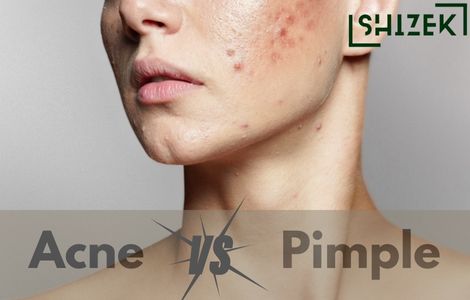Difference Between Drying and Dehydration

The key difference between drying and dehydration is that drying refers to the loss of oil and moisture from the skin’s outer layer, while dehydration is the lack of water content in the skin, affecting all layers.
Drying and dehydration are common skin issues often mistaken for one another. This article explores these conditions, their causes, prevention methods, and key differences to help you manage your skin health effectively.
Table of Contents
- What is the Difference Between Drying and Dehydration?
- What is Drying?
- What is Dehydration?
- Key Similarities and Difference Between Drying and Dehydration
What is the Difference Between Drying and Dehydration?
| Parameter | Drying | Dehydration |
| Definition | Loss of oil and moisture from the skin | Lack of water content in the skin |
| Causes | Harsh weather, over-washing, harsh soaps | Not drinking enough water, excessive sweating |
| Symptoms | Flakiness, rough texture, itching | Dullness, tightness, increased sensitivity |
| Affected Layers | Outer layer of the skin (epidermis) | All layers of the skin |
| Skin Type | More common in dry skin types | Can occur in any skin type |
| Treatment | Moisturizers, gentle cleansers | Hydrating products, increased water intake |
| Prevention | Avoiding hot showers, using humidifiers | Drinking sufficient water, hydrating diet |
| Impact on Skin Barrier | Weakens the skin barrier | Can weaken the skin barrier over time |
| External Factors | Weather, skincare products | Environment, physical activity |
| Internal Factors | Genetics, age | Overall hydration levels |
Must Check
What is Drying?
Drying is a process that involves the removal of moisture or water content from a substance, such as a solid, liquid, or gas.
It can be achieved through various methods, including evaporation, sublimation, or using mechanical means like centrifugation.
The primary goal of drying is to preserve the substance by preventing the growth of microorganisms and the occurrence of chemical reactions that require water.
The specific method of drying used depends on the material being dried and the desired end result.
Reasons for Drying:
- Harsh weather conditions (cold, wind)
- Over-washing or using hot water
- Harsh soaps and detergents
- Aging
- Certain medications
Precautions to Prevent Drying:
- Use a gentle cleanser
- Moisturize regularly
- Avoid hot showers
- Use a humidifier in dry environments
- Protect skin from harsh weather
Must Check
What is Dehydration?
Dehydration is a process that involves the removal of water from food products to aid in preservation.
This is typically achieved through methods such as air-drying, sun-drying, or using specialized dehydrators that control temperature and air circulation.
The removal of water inhibits the growth of bacteria, yeasts, and molds, thereby extending the shelf life of the food.
Dehydrated foods are lightweight, convenient for storage, and can be reconstituted with water when ready to be consumed. Common dehydrated foods include fruits, vegetables, meats, and herbs.
Reasons for Dehydration:
- Not drinking enough water
- Excessive sweating
- Overconsumption of caffeine or alcohol
- Air conditioning and heating
- Certain medical conditions
Precautions to Prevent Dehydration:
- Drink plenty of water
- Include hydrating foods in your diet (fruits and vegetables)
- Use hydrating skincare products
- Avoid excessive caffeine and alcohol
- Manage stress levels
Must Check
Key Similarities and Difference Between Drying and Dehydration
- Both can cause discomfort and affect skin appearance.
- Both conditions can weaken the skin barrier.
- Prevention for both includes proper skin care and hydration.
- Drying is primarily about oil and moisture loss, while dehydration is about water content.
- Drying mainly affects the outer skin layer, whereas dehydration affects all skin layers.
- Different causes and prevention methods are needed for each condition.
Explore Our Other Blogs























































































































